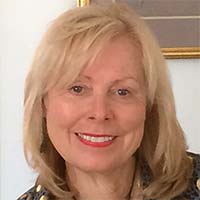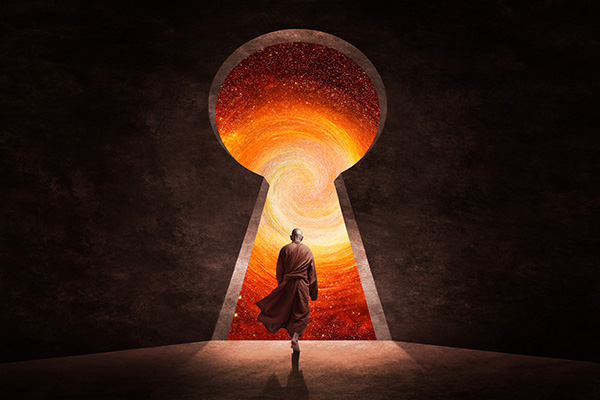Comprehending the Fascinating Occurrence of Table Turning
 Table turning, often referred to as “table tipping” or “table tilting,” is an intriguing method of spirit communication that takes place during séances.
Table turning, often referred to as “table tipping” or “table tilting,” is an intriguing method of spirit communication that takes place during séances.
This practice involves individuals positioning themselves around a table, lightly resting their hands on its surface to establish a connection with spirits. The table may then move, tilt, or, in extraordinary instances, float or rotate in reply to inquiries made to the spirit realm.
The phenomenon of table turning rose to fame in the mid-1800s, a period when Spiritualism was rapidly gaining traction across Europe and North America. People were captivated by the potential of reaching out to the afterlife, making séances a popular social event.
During that era, individuals lacked the resources or easy access to mediums and channelers available today. Small circles of family and friends would convene to engage with the spirit world.
Table turning was deemed an entertaining way to amuse guests at social functions and was even classified as a parlor game. Notably, Mary Todd Lincoln, the wife of President Lincoln, is said to have participated in and even organized séances in the White House.
Prominent spiritualists of the time, including the Laurie family and Nettie Colburn Maynard, reportedly joined the Lincolns during their séances. Mrs. Lincoln exhibited a profound interest in spiritualism and mediumship, especially following the deaths of her children, Edward and later Willie.
While accounts of table turning can be traced back to the second century, its surge in popularity during the 19th century is primarily linked to the renowned Fox family in Hydesville, New York. In 1848, reports of poltergeist activities led to strange knocking sounds and the movement of tables.
The applications of table tipping are diverse and rich, unveiling a magnificent world filled with potential — one where this connection with spirit benefits not just you but also those around you who may not even be present at the table ~ Teresa Lally
By the 1850s, table turning had become a widespread sensation in America, enthralling many, and in 1852, two American mediums, Mrs. Hayden and Mrs. Roberts, brought the practice to England.
Within a year, the activity gained tremendous popularity nationwide, leading to fashionable events known as “tea and table turning” parties. Even Queen Victoria and Prince Albert were reported to have attended table-turning séances.
However, there was a notable backlash from religious groups, with clergymen attributing the phenomenon to demonic forces and numerous scientists dismissing it as folly or deception.
Table Turning Skepticism & Research
Michael Faraday, a British scientist renowned for his groundbreaking work in electromagnetism, electrochemistry, and parapsychology, endeavored to apply scientific principles to investigate supernatural occurrences. He performed experiments on table turning and eventually concluded that the movements were the result of the ideomotor effect — unconscious muscular actions causing participants to push the table without being aware.
Yet, Faraday’s theory didn’t elucidate all observed cases. There have been documented instances of tables tilting and even floating without any physical contact. A notable incident was recorded in 1853 in Valleyres, Switzerland, where Count Agenor de Gasparin, a French scholar and paranormal researcher, chronicled a heavy table’s remarkable movements without any direct touch. Even when bags of sand and heavy stones were placed on it, it lifted multiple times before ultimately disintegrating.
The subsequent year, Marc Thury, a physics professor at the University of Geneva and a colleague of Gasparin, conducted his own investigations. Thury reported observing a piano move seemingly on its own, attributing the occurrence to psychokinetic forces from a young boy nearby, who lacked the strength or opportunity to move the piano himself.
In 1869, the London Dialectical Society formed several committees consisting of scientists, clergymen, and laypeople to examine spiritualist phenomena like table turning and spirit communication. Sub-Committee No. 1 specifically documented various instances of table movements and levitation occurring without any physical contact. Some initial skeptics among committee members converted to believers after witnessing the phenomena with their own eyes.
Further evidence was recorded in the early 20th century. Mediums like Indridi Indridason from Iceland and Kathleen Goligher from Ireland were subjects of thorough scientific studies, with numerous observers reporting remarkable and unexplained table movements during their séances.
As recently as the 1970s, researchers such as Kenneth Batcheldor and Colin Brookes-Smith executed experiments demonstrating that tables could move under regulated conditions — some even soaring several feet into the air! Their findings remain a significant aspect of parapsychological research history.
Then the table commenced rising from the ground, reaching a height of about twelve to eighteen inches, remaining suspended and perfectly level. We were permitted … to enter beneath the clasped hands of the sitters into the circle and attempt to force the table down. We both found it impossible to do so ~ William Barrett
How To Conduct A Table Turning Séance
Preparation: Creating the right atmosphere is key. Arrange your table in a serene, dimly lit space devoid of distractions. Employ candlelight or soft illumination to foster a tranquil, welcoming environment. Soft music or incense may also enhance the ambiance.
Gathering: Organize a setting around a fitting table, such as a card table or small wooden table. Table turning is most effective with a small group containing at least two and no more than seven participants. Everyone should approach the session with openness, calmness, and focus. Lightly place your fingertips on the table’s surface — avoid pressing down. Keep your arms relaxed to create a gentle and connected energy flow.
In my experience, every table moves — regardless of size, yet I believe a wooden pedestal table works best. Initially, I used an ornate antique for my first table. After an extensive search and investment of time and resources, I realized that antiques were not practical for teaching table turning classes. One day, while shopping for Christmas decorations, I stumbled upon several cute little wooden octagonal pedestal tables offered at a very reasonable price — just the right dimensions for comfortable use. They work wonderfully.
Invocation: Commence with a brief grounding and protection prayer, meditation, or ritual, such as envisioning a circle of light or an energy shield, calling on spirit guides or ancestors, or surrounding yourself with a protective circle of angels. It’s crucial to acknowledge that all types of spirits may wish to communicate, so seek only the highest, most beneficial insights for everyone present. Dedicate a few minutes to silence or guided meditation to elevate the group’s energy.
Invitation: Ideally, designate one individual to speak for the group. Invite the spirit to step forward and communicate. Keep the invitation clear, respectful, and aligned with your intention. Maintain stillness, attentiveness, and patience.
Activation: Initially, you may perceive a tapping or knocking sound. With time and patience, the table may start to feel vibratory and begin to move gradually. Eventually, it might rock, tap, or lift from one side. Sometimes people find it necessary to stand to keep pace with it. It could engage in a little dance or even traverse the room — with the group closely trailing to maintain contact with the table. If needed, you can ask the table to settle down. Most spirits are eager to oblige and get to work, although some may require several requests.
It may take a few minutes or multiple sessions to stimulate spirit activity, so it’s essential to exercise patience. Sustain a high energy level and steer clear of doubt or distraction. Always prioritize the emotional and energetic safety of all participants.
Communication: Once the table’s activity has stabilized, set communication guidelines, such as, “Spirit, please tilt the table once for yes, twice for no.” Pose clear, respectful inquiries. Observe and be attuned to the table’s movement responses. Avoid coercion — table movement should emerge organically and not be forced.
You might also circulate around the table to determine with whom the spirit wishes to communicate. Occasionally, the table will instinctively move toward that person without being prompted! Once it’s ascertained who the spirit is engaging with, the dialogue can commence. The participant might inquire, “Are you my grandmother?” or even name a relative, friend, or a cherished pet, etc. It’s also valuable to jot down a few questions from each attendee prior to initiating the session.
Closing: Conclude the session by expressing gratitude to the spirit and disbanding the circle respectfully and calmly. Initially, keep sessions brief (not exceeding 20 to 30 minutes).
I’ve had many remarkable experiences with table tipping. The table can move in various ways — lifting an inch off the floor, swaying, and sometimes even going fully upright. While I’ve yet to see a tabletop fall, we’ve observed tables coming loose or developing cracks from all the paranormal activity. (Not an ideal situation for antiques!)
Occasionally, the table will gently tip into a sitter’s lap. I like to think of this as a “spirit hug.” It can evoke strong emotions. Sitters may laugh or cry, but more often, they feel grateful for having witnessed this extraordinary phenomenon.
I’ve even been fortunate enough to join a group of medium friends at a historic table that once belonged to the esteemed spiritualist Harrison D. Barrett. He was a pivotal figure in the Spiritualist community of the 1800s and served as President of the National Spiritualist Association of Churches (NSAC) in both the United States and Canada. His aim was to establish Spiritualism as a legitimate religious philosophy, merging scientific exploration with spiritual beliefs.
|
Elizabeth’s gifts are rooted in several generations. She discovered her own abilities at an early age, recognizing the differences between herself and the majority of those around her. She has since refined and mastered various metaphysical practices, offering hypnotherapy, Psychic Mediumship, Mysticism, and Hypno-Reiki to her clients in Maine, as well as in various locations across the US and Canada, where she travels. A pet lover, they serve as her greatest teachers, often contributing insights to readings alongside the Angels, Guides, and departed loved ones who provide resolution and answers for each of her clients. Elizabeth is also an author with considerable spiritual wisdom to share and is currently writing a book. If you wish to receive her unique Psychic Wisdom to find peace and gain insights that will facilitate your highest good, you can contact Elizabeth at Psychic Access. |
Exploring the Captivating Phenomenon of Table Turning
Table turning, also termed table tipping or table tilting, is a captivating phenomenon that has fascinated and mystified individuals for ages. This practice involves a table being moved or tipped without any discernible physical force acting upon it. While some dismiss it as mere trickery or deception, others regard it as a genuine paranormal event. In this discussion, we will delve into the history, theories, and possible insights surrounding this captivating phenomenon.
Historical Overview of Table Turning:
Table turning gained traction during the 19th century as part of the spiritualist movement. Spiritualism emerged as a belief system in the mid-1800s, emphasizing the notion that the living could establish communication with the spirits of the departed. Table turning became a standardized practice during séances, where individuals gathered around a table, placed their hands upon it, and endeavored to communicate with spirits.
The Phenomenon Unfolded:
During a typical table turning session, participants usually form a circle around a table, lightly resting their hands on its surface. They then pose questions or make requests to the spirits, anticipating a response. In some instances, the table may exhibit vibrations, movement, or even levitation. The motions are frequently described as gentle, but they can also be vigorous and rapid at times.
Theories and Possible Explanations:
1. Ideomotor Effect: One of the prevalent explanations for table turning is the ideomotor effect. This psychological phenomenon indicates that unintentional muscle movements can ensue without conscious awareness. When participants touch the table, subconscious desires or anticipations may trigger slight movements, giving the appearance of the table moving.
2. Group Psychology: Another theory posits that table turning arises from group psychology and suggestion. When people congregate around a shared belief in the paranormal, they may unconsciously affect one another’s actions. This collective energy can manifest as table movement.
3. Supernatural or Spiritual Explanation: Some advocates of table turning assert that the phenomenon is authentically supernatural or spiritual in nature. They believe that spirits or otherworldly beings are behind the movements. However, this argument remains speculative and subjective due to a lack of solid proof.
4. Physical Forces: Skeptics often attribute table turning to physical factors such as vibrations, uneven surfaces, or subtle air currents. These elements can cause the table to shift or tip, presenting an illusion of paranormal activity. Nonetheless, this reasoning fails to account for scenarios wherein the table moves against gravity or when numerous observers witness the event.
In Summary:
Table turning continues to intrigue and captivate individuals globally. Whether a result of psychological factors, group dynamics, or authentic paranormal activity, the phenomenon remains a topic of debate and fascination. While skeptics may regard it as mere mental trickery, others find themselves drawn to the potential for connecting with the unknown. Regardless of personal beliefs, table turning serves as a testament to the enduring mysteries that inhabit our world, awaiting exploration and understanding. Continue reading















